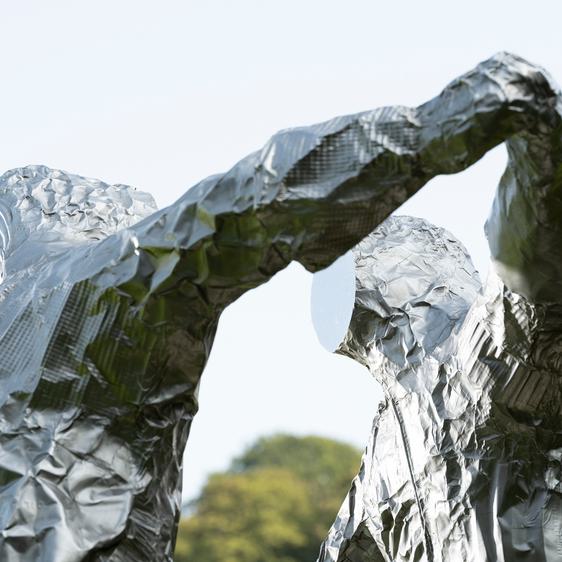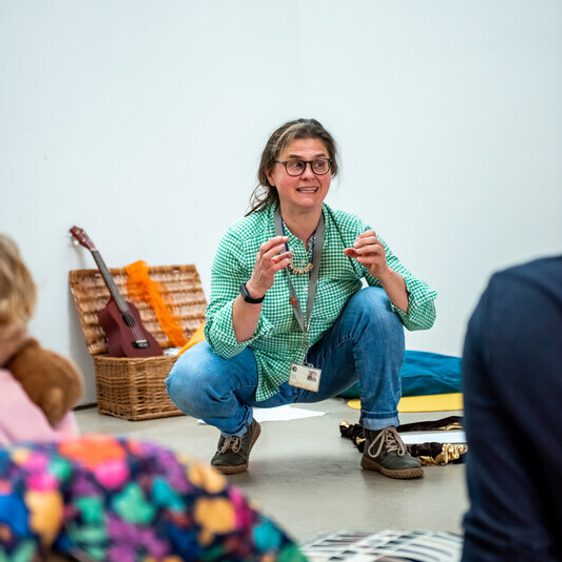
Leiko Ikemura: Usagi Kannon II
Art Outdoors /Leiko Ikemura: Usagi Kannon II
Usagi Kannon II [Rabbit Madonna] is one of Ikemura’s most significant motifs. Her hybrid creature with rabbit ears and a crying, human face acts as symbol of universal mourning, first created in 2011 in response to the Fukushima nuclear disaster in Japan, and the subsequent reported birth defects in animals. Questioning cycles of creation and destruction, Ikemura’s work shares her concerns for the future of our planet at a time when natural habitats are increasingly under threat.
The character’s bell-shaped skirt acts as protective shrine. It combines the artist’s interest in Eastern and Western imagery, bringing together the Japanese Buddhist goddess of mercy, Kannon, and Christian iconography of the Virgin of Mercy and people sheltering under the outspread cloak of the Virgin Mary. Ikemura originally conceived a pair of Usagi Kannon, with the partner to act as a hope-giving protector for all people and living things.
Courtesy of the artist.
I think the female figure, as imagined by male artists, is frequently an idealised version of the female form and is always seductive in some way... The way females naturally accept being modelled by conventions and social norms does not interest me.
- Leiko Ikemura
You might also like
- Art Outdoors

Tom Friedman: Hazmat Love
- News

Double delight for YSP at 2023 Yorkshire Post Tourism Awards
5 December 2023 - Profile

Merran McRae
- Event

Storytelling in the Gallery: William Kentridge
–Led by our spellbinding storytellers, move, make and imagine together, inspired by the William Kentridge: The Pull of Gravity exhibition.


